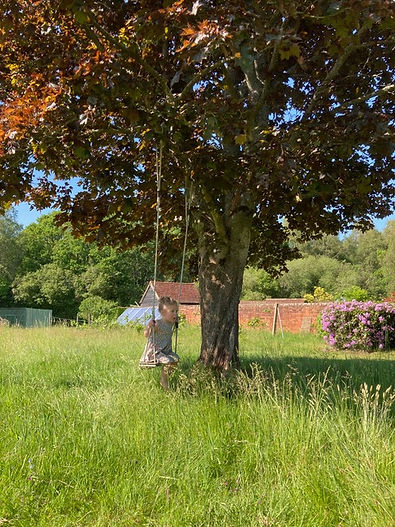
Trees

Trees
Surrey is the most densely wooded county in England, with approximately 42,091 hectares or 24% coverage of woodland, compared to the proportion of national woodland coverage at around 10%.
Estimates suggest that 21% of Surrey consists of mixed deciduous and beech and yew woodland, with an additional 3% cover as coniferous plantation.
Trees are a significant component of our environment: they capture carbon; species such as oak can host some 2000 species of other organisms; they provide shade, tranquillity and, no doubt, deliver health benefits.
If a mature tree is damaged and dies it takes decades before any successor tree can replace it - we must therefore look after our trees; but also recognise that, at the end of the day, their life is limited and we must plan for succession.

Management of Shamley Green's trees

The commons in the centre of Shamley Green contain 80 mature trees, some very large and old, some much more recent. With the responsibility for managing our common land moving from Waverley Borough Council to Wonersh Parish Council, the SGEG Tree Working Group will be the ‘eyes and ears’ of the council, undertaking quarterly tree inspections to spot signs of damage or disease, listening to villagers' concerns, and checking after storms to report anything which needs dealing with urgently.
If you have any suggestions or concerns about the trees on Shamley Green common land please let us or the parish council know. Any urgent safety issues should be reported directly to clerk@wonershparish.org.
Waverley, as the landowners, have ultimate responsibility for the trees and any tree work required needs to be done by qualified insured contractors.
The Tree Working Group' s aims are to:
-
help the Council to manage and minimise risks to people or property, and to avoid the unnecessary removal or disfigurement of trees
-
assist the Council to identify and conserve habitats that are provided by trees, including those that are old and decaying
-
work in partnership with the Parish Council to develop a plan for future tree planting
-
assist with the planning, procurement and planting of trees in the village, taking into account not only their biodiversity credentials and climate resilience, but also the preferences and wishes of local people
These maps show all the trees on the main village greens, Lords Hill and Nursery Hill, with thanks to Patrick Mannix for all his initial work mapping tree positions in 2021. For a full inventory see our reports page

Click on the following for our news articles about trees:
October/November 2023 tree inspection
Dramatic shedding of willow branch 2023
New Trees & Queen's Green Canopy 2023
Coppicing in Cucknells Wood 2022
For the stories behind trees planted on Duck Pond Green and Malthouse Green see Tree Stories 1.
For trees by the Red Lion and Court House Green see Tree Stories 2.
And for trees on and around the Cricket Green and at Lords Hill see Tree Stories 3.
Hedges and Wildlife corridors
Healthy hedges, along with their related habitats, such as ditches and banks and field margins function as wonderful wildlife corridors . They offer wildlife such as birds, insects, small mammals, reptiles and amphibians the opportunities they need to escape predators, find food and building materials, find a mate and breed successfully. It is important that the hedges are native mixed hedges, offering different food sources at different times of the year. Species such as hawthorn, blackthorn, dogrose, field maple, spindle, dogwood, and guelder rose are ideal.
Since the second world war the UK has lost about half of its hedgerows and in Surrey 93% of its remaining hedges are in poor condition. 130 key species that depend on hedgerows are now at risk of extinction. Hedgerows urgently need to be restored. Surrey Wildlife Trust aim to plant, protect and restore an 80 kilometre stretch of hedges along the North Downs with the help of thousands of local people including landowners, farmers, school children, volunteers and local hedge laying societies.
Hopefully Shamley Green along with other villages can help to restore our corridors by linking our gardens, our verges, our hedges and our woods. We need to provide a rich biodiverse environment for our wildlife everywhere not just in disconnected and isolated nature reserves.
For great advice on how to plant your own wildlife-friendly hedge click here.
And for an inspiring account of wildlife corridors now being created in neighbouring Sussex, click here.



